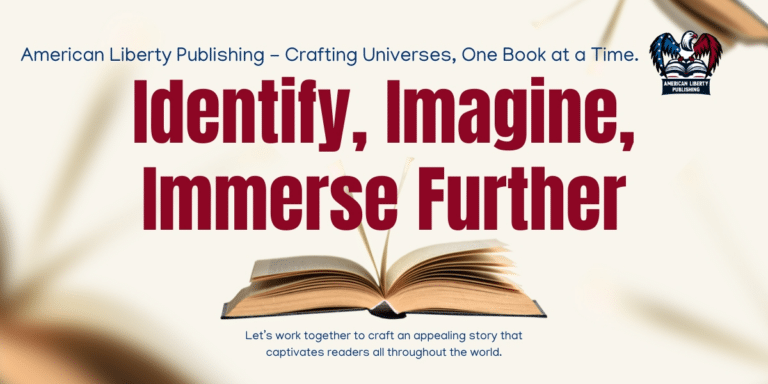By: SEO Mavens
In today’s fast-paced digital world, social media has become the go-to source for consuming news. Platforms like Twitter, Facebook, Instagram, and TikTok have completely transformed how we receive and engage with information, shifting from traditional news outlets to a more interactive, user-driven experience. This transition has brought immense benefits but also introduced unique challenges in the way we understand, trust, and interact with news.
How exactly has social media changed the landscape of news consumption? Let’s dive deep into its role, the pros and cons, and the impact on how we perceive the world.
A Revolution in News Access: Instant and Everywhere
One of the most significant changes social media has introduced is instant access to news. Gone are the days when people waited for the evening news on TV or the morning newspaper to stay informed. Now, news is available at our fingertips, 24/7.
Real-Time Updates
On social media platforms, breaking news spreads like wildfire. Whether it’s a major political event, a celebrity controversy, or a natural disaster, information travels instantly. Twitter, for instance, has become a hub for real-time updates, where users follow live threads and updates directly from journalists, eyewitnesses, or even officials.
- Example: During global events like elections or protests, platforms like Twitter often provide live minute-by-minute updates, giving users real-time access to events as they unfold.
Global Reach, Local Stories
Social media platforms provide a window to the world, allowing users to consume news from every corner of the globe. However, it’s not just global headlines that dominate. Local news and stories, once overlooked by mainstream media, now gain attention and visibility through regional or niche accounts.
- Example: During natural disasters or local elections, stories can go viral, bringing attention to issues that may have otherwise been underreported.
Personalized News Feeds: Convenience with a Catch

Photo: Unsplash.com
One of the most innovative (and controversial) aspects of social media is its ability to personalize news feeds. Algorithms curate content based on your preferences, interests, and past interactions. This ensures that you’re primarily shown news that aligns with your likes and reading habits. But while this is convenient, it’s also where things start to get tricky.
The Convenience of Tailored News
Social media platforms learn what you engage with most and offer more of it. If you frequently read political news, you’ll be shown more of it. If you prefer technology updates or entertainment news, that’s what will dominate your feed. This customization can help users stay more engaged by presenting content that resonates with their personal preferences.
- Example: On Facebook, users might see more updates from news sources they’ve interacted with in the past or articles shared by friends with similar interests.
The Downside: Filter Bubbles and Echo Chambers
While personalized news is convenient, it can also limit the diversity of information we’re exposed to. This is known as the filter bubble effect, where users are often shown content that reinforces their existing beliefs and opinions while opposing viewpoints are pushed aside.
- Echo Chambers form when like-minded individuals amplify similar ideas within closed networks, reducing the exposure to differing perspectives.
- Example: On Twitter, users following accounts that align with specific political ideologies may rarely see opposing viewpoints, reinforcing their existing beliefs rather than challenging them with new information.
Social Media as a News Source: A Double-Edged Sword

Photo: Unsplash.com
While social media platforms offer a broad spectrum of news, they also raise concerns about credibility and misinformation. Unlike traditional media outlets that adhere to journalistic standards, anyone can post or share news on social media, blurring the line between reliable sources and unverified information.
The Rise of Citizen Journalism
Social media has empowered individuals to become citizen journalists, allowing ordinary people to report news, especially in regions where mainstream media presence is limited. These firsthand reports can offer raw, unfiltered insights into events.
- Example: During protests or natural disasters, people on the ground can share videos, photos, and live updates, providing real-time information that traditional media might miss.
The Spread of Misinformation
However, this democratization of news also gives rise to misinformation and fake news. False stories can spread just as quickly as legitimate news, often misleading the public or causing unnecessary panic.
- Example: The COVID-19 pandemic saw a flood of misinformation on social media, with conspiracy theories and unverified health advice circulating widely.
Fact-Checking and Responsibility
To combat the rise of misinformation, many social media platforms have introduced fact-checking mechanisms. Facebook, Twitter, and Instagram now partner with independent fact-checking organizations to label or remove false content. However, the responsibility of verifying news still largely falls on the shoulders of individual users, making critical thinking an essential skill in today’s digital age.
The Power of Virality: When News Goes Viral
One of social media’s defining features is its ability to make stories go viral. A single tweet, video, or post can spread across millions of users within hours, sometimes shaping public opinion or even influencing policy.
Amplifying Important Issues
Social media has the unique power to amplify causes and issues that may have otherwise been overlooked by mainstream media. Movements like #MeToo, #BlackLivesMatter, and climate action campaigns gained momentum and international attention largely thanks to their virality on platforms like Twitter and Instagram.
- Example: The #MeToo movement, which began as a social media hashtag, evolved into a global movement that sparked discussions on sexual harassment and abuse worldwide.
The Danger of Mob Mentality
However, the viral nature of social media can also lead to the spread of outrage, where users jump on trends or controversies without fully understanding the context. This can lead to online harassment, “cancel culture,” or the spread of misinformation at an alarming rate.
- Example: A single misinterpreted tweet or video can ignite a firestorm of online outrage, sometimes leading to individuals or organizations being “canceled” without due process or understanding.
The Role of Influencers and Social Media Personalities in News
Alongside traditional journalists, influencers and social media personalities are increasingly becoming key figures in news dissemination. Many users now turn to their favorite YouTubers, TikTokers, or Instagram influencers to get updates on current events, social issues, or trends.
A Shift in Trust
While traditional media outlets like CNN or The BBC have built credibility over decades, influencers build trust through personal connections with their followers. Many young people prefer news from influencers they feel align with their values, seeing them as more relatable than traditional journalists.
- Example: Influencers with large followings often speak about political issues, social justice, or public health, offering their opinions or encouraging activism among their followers.
The Risks of Unverified Information
However, since influencers are not bound by journalistic standards, they can sometimes spread unverified or biased information. This adds another layer of complexity to news consumption, as it becomes harder to distinguish between well-researched news and mere opinion.
Navigating the Future of News in the Age of Social Media
There’s no denying that social media has reshaped how we consume, share, and engage with news. From real-time updates and viral movements to the spread of misinformation, the power of these platforms is both a blessing and a challenge.
As social media continues to evolve, it’s crucial for consumers to remain aware of its limitations while taking advantage of the convenience and connectivity it offers. Critical thinking, verifying sources, and seeking out diverse perspectives are more important than ever in navigating the vast sea of information that social media provides.
In the end, social media’s role in shaping news consumption is a reflection of the digital age we live in—one filled with endless possibilities, but also the need for responsibility and discernment.
Published by: Martin De Juan








